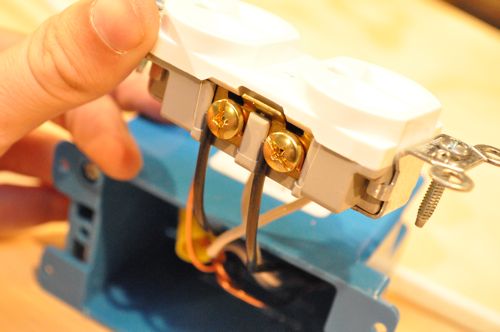RLS7201 wrote:
While some are advocating screw down receptacles over stab locks or punch downs, because they think they stay tighter longer. How about all the loose screws in the RV circuit breaker panels. More posts about loose screws in circuit breaker panels than loose wires in receptacles. Just goes to prove that screws are not the final answer to electrical connection either.
Richard
Some folks (not you) just don't know a whole lot about residential vs RV (SCD) receptacles, the difference in connections and how to correctly terminate the wire and are quick to condemn RV receptacles.
Below is a standard side-wired & back-wired receptacle that is common in residential applications. Note the back-wired "quick-connect" connection and how there is simply a spring to hold the wire in place. No way in h*ll can someone convince me that those are better than the SCD receptacles in RVs which require a special tool that forces the wire into the "stabs". These quick-connect receptacle are known to be a problem in the industry, especially at the end of a circuit run that has many receptacles on it and has a high current draw on the last ones, like say a plug-in heater.
Some residential recepts. have a side-wired terminal where the wire is directly under the head of the screw. The correct procedure is to do a 180 degree wrap of the wire before tightening the screw down to get more surface area contact. Many people don't bother to take this important step or the wire is barely hanging on. With some recepts., you strip the wire and it gets clamped down like in the last photo. This is a better method.
Doesn't matter if it's a cheapo 99 cent receptacle, an RV receptacle or military grade one, the connection is only as good as the person installing it. They're all UL tested and listed. As most know, some of the workmanship in RVs ranges from poor to pathetic and that's the issue. I'll take an RV/SCD receptacle any time.





